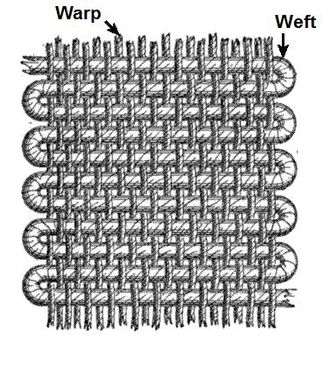Navajo Double Saddle Blanket with Interlocking Hooks Design [SOLD]
+ Add to my watchlist Forward to Friend
- Category: Navajo Textiles
- Origin: Diné of the Navajo Nation
- Medium: wool
- Size: 29” x 34”
- Item # C4583E SOLD
This excellent saddle blanket was woven in a size that could be folded in half for additional comfort for the horse. Since it has not been used on a horse, and is not likely to be used as such, it is a perfect size to display fully open. The center rectangular block is a tan color, achieved by carding white and brown wool together—in this case more white than brown yarn.
The blanket is bordered by a band measuring 7-½” wide on the long sides and 6” wide on the short ends. The outer band is red and the inner one is brown. From the red border there are attached L-shaped red bars and from the inner brown border are similar L-shaped brown bars. The interlocking hooks create a maze in the white wool surrounding them.
Selvedge cords wrapped around the four edges of the blanket are tied off at the corners and end in short tassels.

Warp and Weft: In weaving, the weft (sometimes woof) is the term for the thread or yarn which is drawn through, inserted over-and-under, the lengthwise warp yarns that are held in tension on a frame or loom to create cloth. Warp is the lengthwise or longitudinal thread in a roll, while weft is the transverse thread. A single thread of the weft, crossing the warp, is called a pick. Terms do vary (for instance, in North America, the weft is sometimes referred to as the fill or the filling yarn). Each individual warp thread in a fabric is called a warp end or end. The weft is a thread or yarn usually made of spun fibre. The original fibres used were wool, flax or cotton. Today, man-made fibres are often used in weaving. Because the weft does not have to be stretched on a loom in the way that the warp is, it can generally be less strong. The weft is threaded through the warp using a "shuttle", air jets or "rapier grippers." Hand looms were the original weaver's tool, with the shuttle being threaded through alternately raised warps by hand. -Wikipedia
Condition: good condition with no evidence of prior use
Provenance: this Navajo Double Saddle Blanket with Interlocking Hooks Design is from the collection of a gentleman from California
Recommended Reading: The Navajo Weaving Tradition 1650 to the Present by Alice Kaufman and Christopher Selser.
TAGS: textiles, Navajo Nation
- Category: Navajo Textiles
- Origin: Diné of the Navajo Nation
- Medium: wool
- Size: 29” x 34”
- Item # C4583E SOLD



